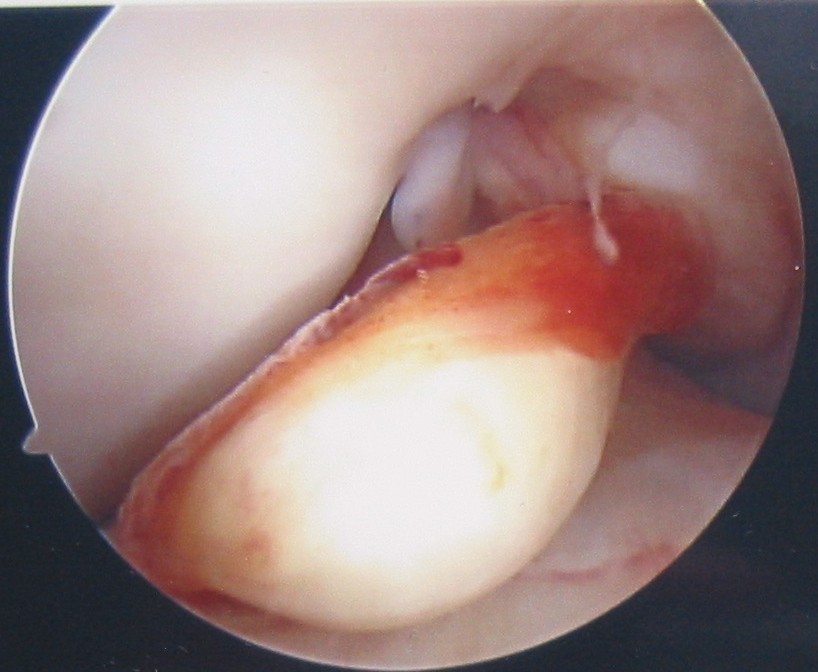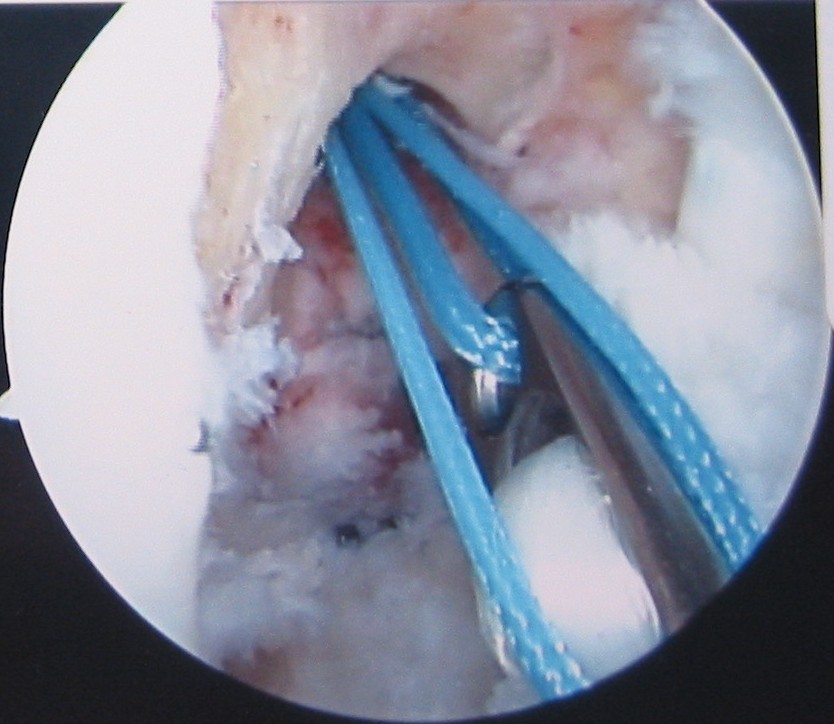Arthroscopic photos and diagrams
illustrating Ania's ACL surgery
Click on any image to enlarge.
This sketch shows how the donor ligament (graft) is fixated to the femur using the endobutton, and to the tibia with a screw. Totally not to scale... | |
The large red and yellowish object in the foreground is my torn ACL. Dr. Larson removed most of it during surgery. He left only small remnants as a source of bloodflow to the newly implanted graft. | |
The metal tool is the femoral aimer. It guides a drill bit which emerges out of the hole to drill a tunnel into the femur. The femor is the yellowish object into which the aimer is poking. The tibia is below the field of view, just out of sight. The intact fibers in the upper right are my healthy PCL (Posterior Cruciate Ligament). | |
After the hole has been drilled into the femur, surgical thread (blue) pulls the endobutton (metal object) through the tunnel. The graft is in turn looped through the endobutton. | |
Here, we see the graft entering the hole in the femur. Remnants of the old ACL will help provide bloodflow to the graft and facilitate healing and repopulation of the donor tissue with host (my) cells. | |
This is how the above pieces fit together. The endobutton consists of a metal piece with four holes. A loop of Dacron goes through two of the holes. The other two holes are used during surgery. The blue surgical thread is looped through these two holes to pull the endobutton through the tunnel in the femur. The metal piece is parallel to the tunnel while being pulled, as shown in the photograph above. When the endobutton has been pulled all the way through the tunnel in the femur, the metal part of the endobutton is flipped 90 degrees such that it sits perpendicular to the tunnel (flush with the bone, as shown in the drawing on the left) and can't be pulled back into the tunnel. The graft is looped through the Dacron loop. When the surgery is complete, then, the blue surgical threads shown here are gone. The metal part of the endobutton sits on the outside surface of the femur. The Dacron loop is entirely inside the femur. The graft is partially inserted into the femur, then crosses the joint, passes through a tunnel in the tibia, and is fixed to the front of the tibia by a screw. |
Return to Ania's ACL Surgery Last updated 14 April 2006 © Anna Mitros
Back to Ania's Home Page





